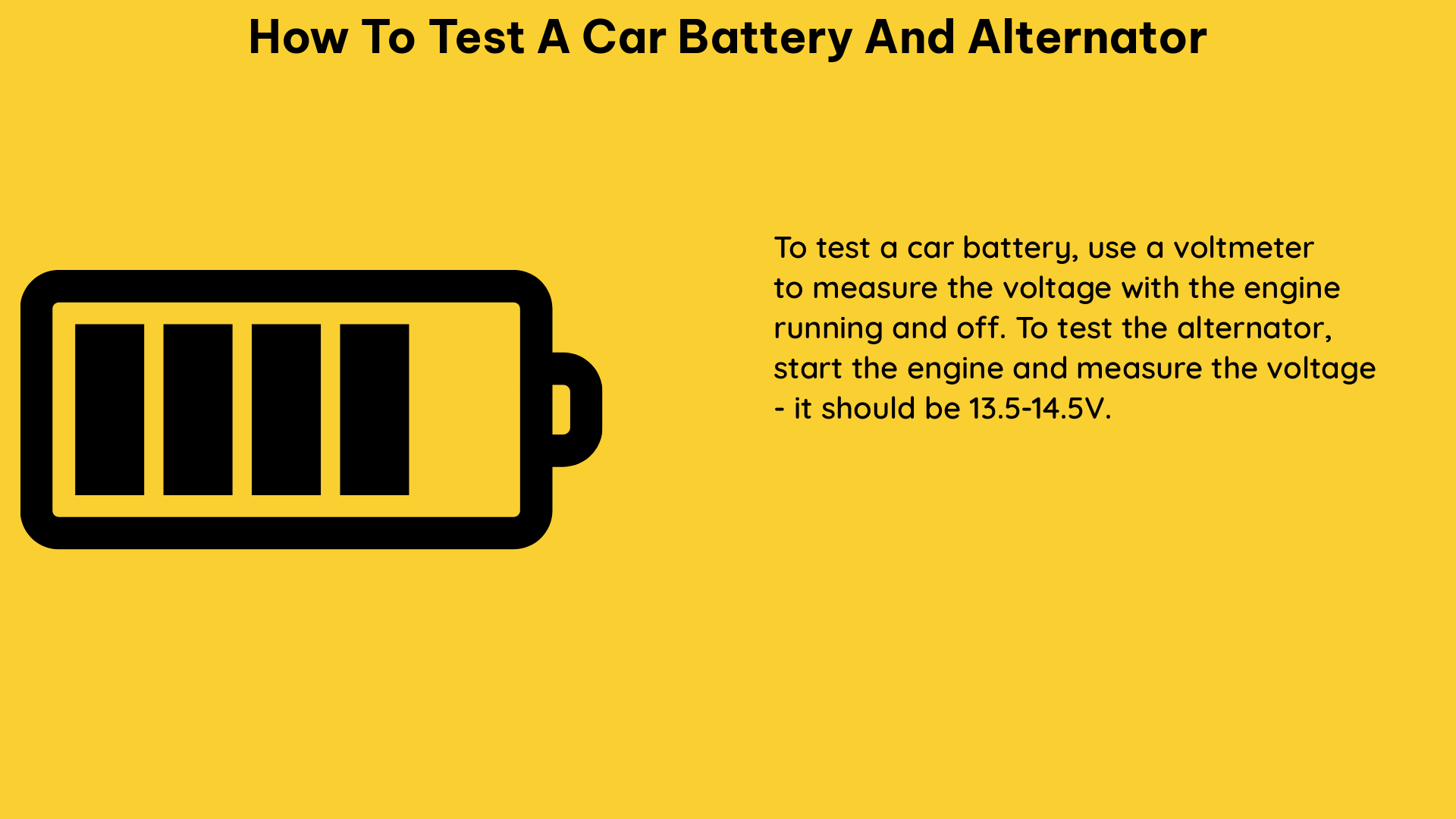Testing the car battery and alternator is a crucial step in maintaining the health of your vehicle’s electrical system. By using a digital multimeter, you can accurately measure the voltage and current output of these essential components, ensuring your car runs smoothly and reliably. In this comprehensive guide, we’ll walk you through the step-by-step process of testing a car battery and alternator, providing you with the technical details and quantifiable data points to make informed decisions.
Preparing the Battery for Testing
Before you begin the testing process, it’s essential to ensure the battery terminals are clean and free of any dirt or corrosion. The positive terminal is typically marked with a red cover and a “+” sign, while the negative terminal has a black cover and a “-” sign. Use fine-grit sandpaper to clean the terminals if necessary, ensuring a proper connection for accurate readings.
Setting Up the Multimeter

Set the multimeter dial to the “20 volts” setting, which is the appropriate range for testing the electrical output from a vehicle battery. This setting will allow you to measure the battery’s voltage with a high degree of accuracy, providing the necessary data to assess its health.
Measuring and Analyzing the Battery’s Voltage
-
Resting Voltage: Measure the battery’s resting voltage with the car turned off. A healthy car battery should have a resting voltage between 12.2 and 12.6 volts.
-
Crank Cycle Voltage: Measure the battery’s voltage during the crank cycle, which is the moment the vehicle is turned on and the battery is under the most draw. A healthy battery should not fall below 10 volts during this cycle.
-
Idle Voltage: Measure the battery’s voltage while the vehicle is idling. A healthy battery should stay in the 14 to 14.5 volt range.
Testing the Alternator
To test the alternator, turn on all of the vehicle’s electrical equipment, such as the headlights, radio, and climate control, to maximize the voltage load. If the multimeter reading drops below 13.5 volts, the alternator is struggling to properly charge the battery and may need replacement.
Quantifiable Data Points and Measurements
Here are some key data points and measurements specific to testing a car battery and alternator:
| Measurement | Healthy Range |
|---|---|
| Resting Voltage | 12.2 to 12.6 volts |
| Crank Cycle Voltage | Not below 10 volts |
| Idle Voltage | 14 to 14.5 volts |
| Alternator Voltage (with all electrical equipment on) | Above 13.5 volts |
By understanding these quantifiable data points, you can accurately assess the condition of your car’s battery and alternator, making informed decisions about maintenance or replacement.
Conclusion
Testing a car battery and alternator is a crucial step in maintaining the overall health of your vehicle’s electrical system. By using a digital multimeter and following the step-by-step process outlined in this guide, you can ensure your car’s battery is strong and healthy, and the alternator is properly charging the battery. Remember to refer to the quantifiable data points and measurements provided to make informed decisions and keep your car running at its best.
Reference:
- How to Test a Car Battery with a Multimeter
- How to Test a Car Battery with a Multimeter
- How to Test a Car Alternator

The lambdageeks.com Core SME Team is a group of experienced subject matter experts from diverse scientific and technical fields including Physics, Chemistry, Technology,Electronics & Electrical Engineering, Automotive, Mechanical Engineering. Our team collaborates to create high-quality, well-researched articles on a wide range of science and technology topics for the lambdageeks.com website.
All Our Senior SME are having more than 7 Years of experience in the respective fields . They are either Working Industry Professionals or assocaited With different Universities. Refer Our Authors Page to get to know About our Core SMEs.